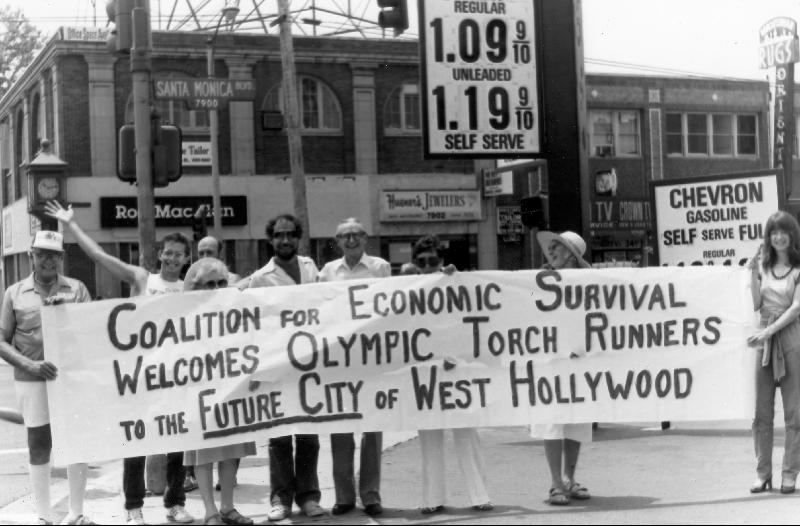Coalition for Economic Survival, the Group That Led the Cityhood Drive, Congratulates the City Built on Rent Control
The Real Story Behind the Creation of the City of West Hollywood
Twenty-five years ago members of the Coalition for Economic Survival (CES) rejoiced after a 7-year campaign to secure tenants' rights and preserve affordable housing in the then 1.9 square mile LA County unincorporated area of West Hollywood.
On November 29, 1984, CES members joined with other residents to pack the auditorium in West Hollywood's Plummer Park, as media from around the world covered the swearing in of West Hollywood's first City Council. Four out of the 5 being elected were on CES' Renters' Right Slate of Candidates. And while the news-media reported on that this was the first City Council with a majority of gay and lesbian elected officials, which was significant in itself, the real story was that the main reason this new city was created was to save and strengthen rent control.
In 1979, CES led an effort to secure a rent control ordinance for LA County's unincorporated areas by a vote of the LA County Board of Supervisors. This came a year after CES' success in winning rent control in the City of Los Angeles. But in 1983, an anti-rent control conservative majority took control of the Board of Supervisors. They eventually voted to phase out County rent control on December 31, 1984.
CES first attempted to counter this by placing the only initiative measure on the LA County ballot, which was a strong rent control law. Proposition M failed in November 1983, as landlords spent millions on a fear campaign targeting homeowner voters in the outlying unincorporated areas. But in West Hollywood the measure received overwhelming (5 to 1) voter support.

Campaign Launched
CES, which had a large active grassroots membership in West Hollywood, took responsibility for obtaining the required number of signatures - 25% of the area's registered voters - in order to place the cityhood measure on the ballot. Pushing to secure the measure for the November 1984 ballot in order to beat the County rent control phase-out date, CES set a County record by signing up 27% of the voters in only 52 days.
Nervous landlords and real estate lobbyists tried to deny a cityhood vote with a failed lawsuit and then by a last minute move to convince the Board of Supervisors to extend a weak version of rent control. Their moves could not stop a November 1984 cityhood vote.
The City of West Hollywood Established
The process also required voters to choose the first five members to serve on the City Council if the incorporation was approved. CES developed a slate of candidates as CES' Renters' Rights Team, which was a reflection of the gay/lesbian, senior and renter community. On November 6, 1984 West Hollywood cityhood and all but one of CES' Renters Rights slate, out of a field of 40 candidates, were approved by voters. At the first City Council meeting the Council unanimously voted to freeze rents and place moratoriums on evictions, demolitions, development and condo conversions until the city developed its own rent control law. The Council also voted to prohibit all forms of sexual discrimination based on sexual orientation.
This was only the beginning. In its 25-year history, West Hollywood has provided leadership in the state and the nation on progressive legislation, such as on LGBT issues, HIV/AIDS, gun violence, domestic violence, women's issues and animal cruelty.
In reflecting on CES' historic work, Larry Gross, CES Executive Director stated, "The success in West Hollywood serves as an important example for tenants in the Los Angeles area and across the nation. When you organize people and bring them together and empower them through their involvement, that's where real change is going to occur. That's where things that matter and impact people are going to happen. This effort must serve as a lesson in people's power for generations to come. West Hollywood was created by an organized grassroots effort. It is a city built on rent control. I am so very proud that CES played such a crucial role and was a determining factor in the creation of the City of West Hollywood."







